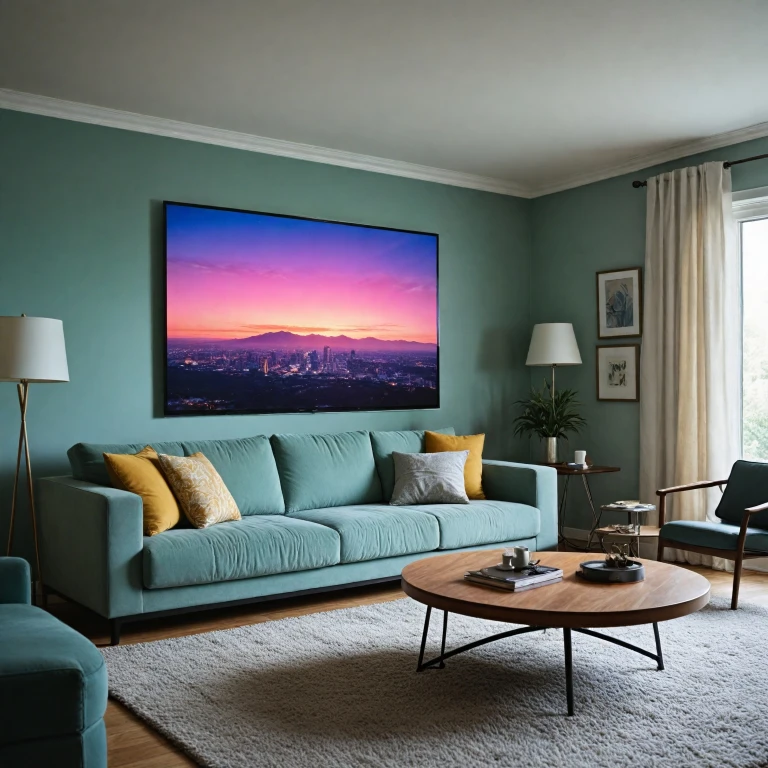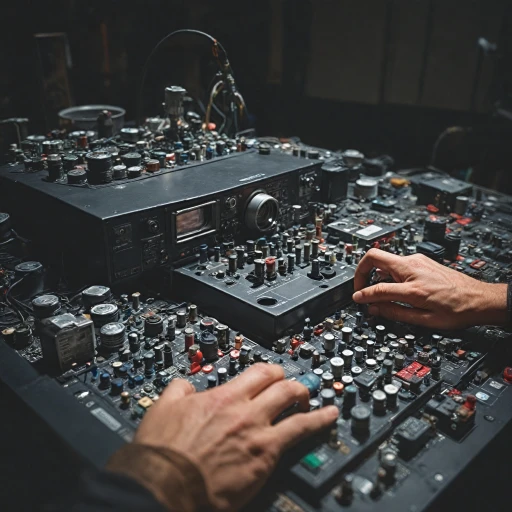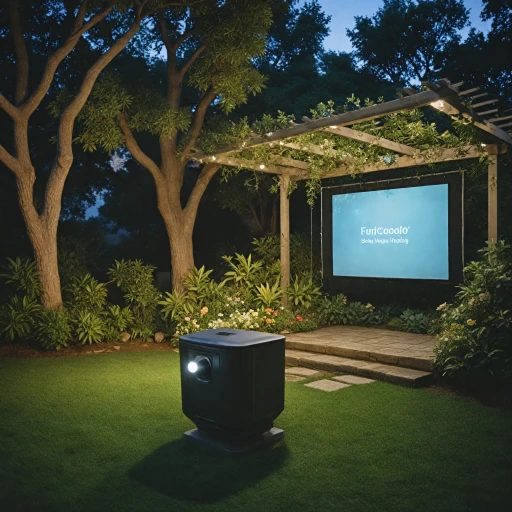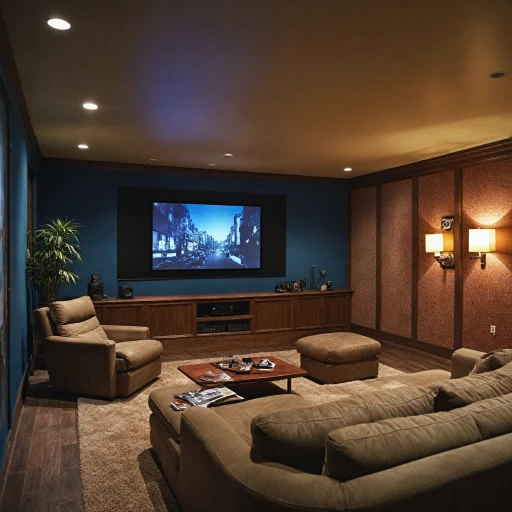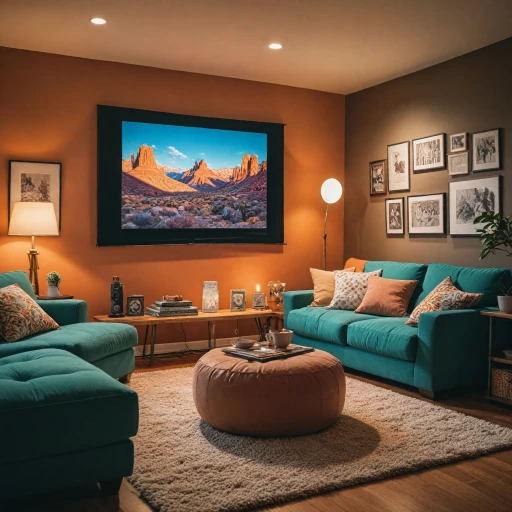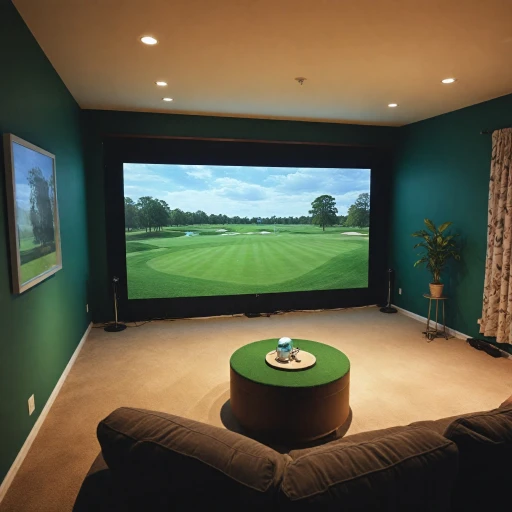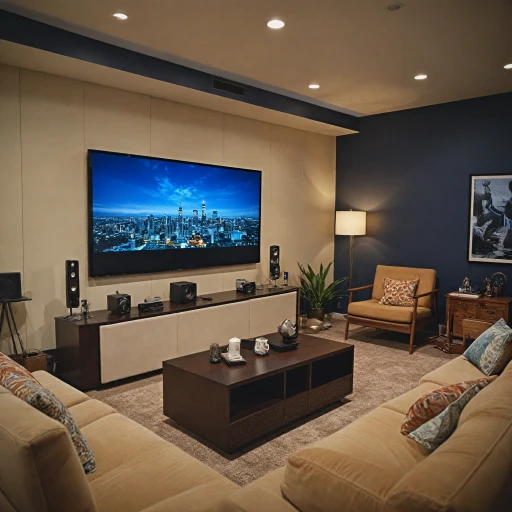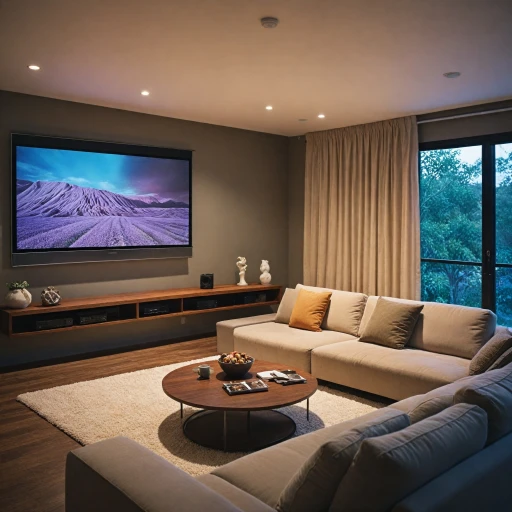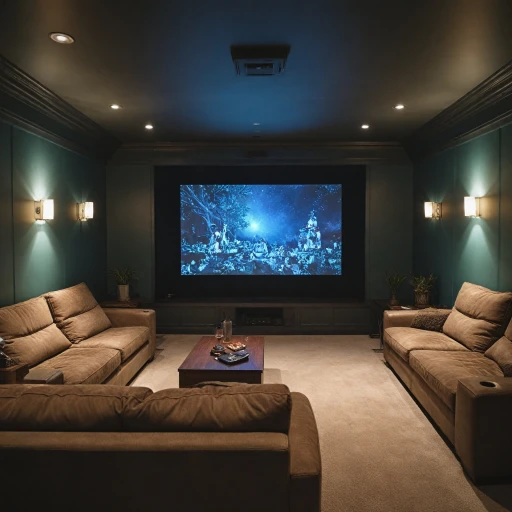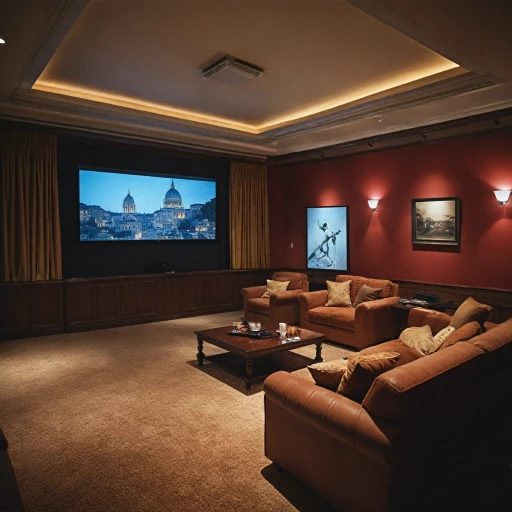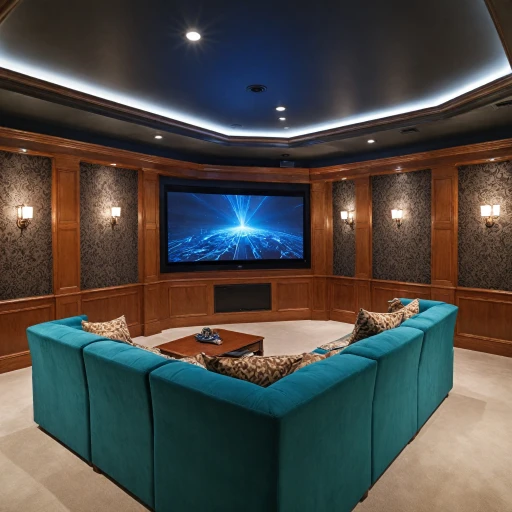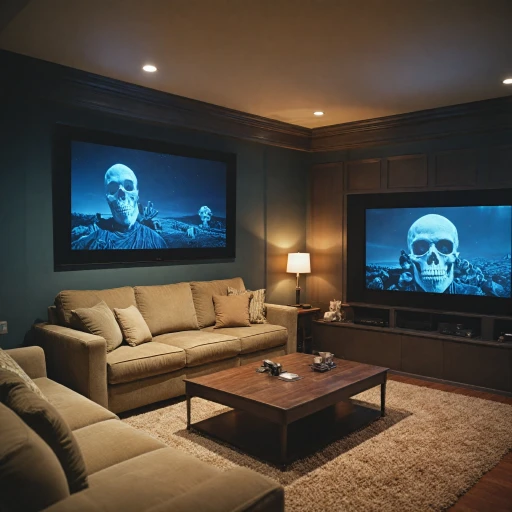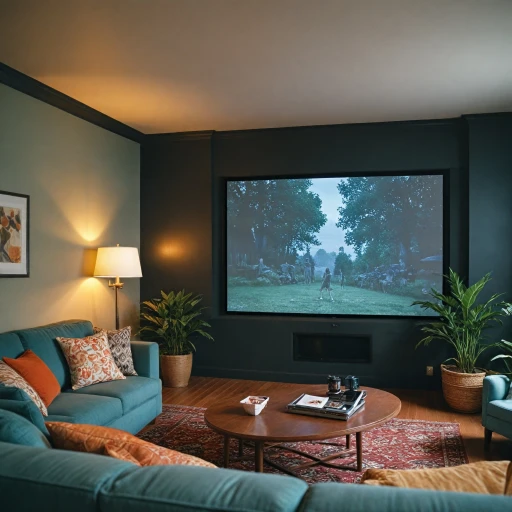
Understanding Ultra Short Throw Technology
The Science Behind Ultra Short Throw Projectors
Ultra short throw projectors represent a leap forward in home theater technology, allowing for a cinematic experience in small spaces. Unlike traditional projectors, which require a significant distance to cast a large image, ultra short throw models can be placed mere inches from the screen or wall. This capability is attributed to advancements in throw ratios, with many of these projectors boasting a throw ratio below 0.4, translating to impressive image sizes even in compact settings.
One of the primary mechanisms behind these projectors is the use of laser light sources, which provide superior brightness, color accuracy, and longevity. Brands like AWOL Vision and Hisense Pro continue to enhance this technology, offering projectors that deliver top-notch performance without occupying excessive space in your home.
The benefit of laser projectors isn't just limited to their compact size. The improved light source aids in producing a vibrant color gamut and consistent image quality, even under ambient light conditions. This makes them particularly appealing for home theater enthusiasts looking to maximize both aesthetic appeal and light management in their entertainment spaces.
With options like the NexiGo Aurora Pro and LTV Pro, homeowners have access to products that integrate seamlessly into virtually any home setup, offering features like Dolby Vision and HDR, vital for experiencing content as intended by creators. Discover more about short throw projectors and revolutionize your viewing experience today.
The Advantages of 4K Resolution
Advantages of Stunning Detail and Clarity
When it comes to ultra short throw projectors, the combination with 4K resolution offers an unparalleled viewing experience, revolutionizing home theaters with breathtaking detail and clarity. Understanding the benefits of 4K resolution directly relates to improving the overall cinematic experience.- Enhanced Image Quality: 4K projectors, like the Epson and Hisense Pro, provide four times the resolution of 1080p projectors, delivering sharper and more detailed images. This intricacy is especially noticeable on larger projector screens, creating an impressive immersive effect.
- Wide Color Gamut: Many of these projectors, such as those featuring Dolby Vision and HDR capabilities, offer a wider color gamut. This technology enhances the color depth and accuracy, ensuring you see vibrant, life-like hues on your screen.
- Increased Brightness: With lumens ratings that surpass many traditional models, 4K projectors powered by a laser light source or triple laser system, like the LTV Pro, can achieve remarkable brightness. This ensures clearer images even in well-lit rooms, making them perfect for versatile viewing environments.
- Superior Contrast Ratios: Models like the Nexigo Aurora boast impressive contrast ratios, resulting in deeper blacks and brighter whites which add depth to the images and enrich every scene.
Installation and Space Considerations
Optimizing Space with Ultra Short Throw Projectors
One of the most significant advantages of employing ultra short throw projection technology in a home theater setup is the ability to maximize usage of limited space. Unlike traditional projectors that require substantial distance to produce large images, ultra short throw projectors can deliver expansive screens from mere inches away. This capability opens up possibilities for those who may not have a vast space to dedicate to their home theater. The key metric here is the throw ratio, which indicates how far the projector needs to be from the screen to create a certain image size. Ultra short throw projectors have a remarkably low throw ratio, enabling a projector, such as the AWOL Vision models or the Nexigo Aurora, to generate images up to 100 inches with the device positioned only a few inches away from the wall. These projectors often leverage advanced technologies, like the triple laser light source, to maintain brightness and color accuracy even in constrained spaces. For instance, the laser projector design ensures consistent image brightness (often measured in lumens) and robust color gamut, allowing for a vibrant viewing experience regardless of room size or ambient light conditions. Brands like Hisense Pro and Epson take full advantage of this with HDR and Dolby Vision capabilities, ensuring remarkable image quality. For installation, one crucial aspect to bear in mind is the compatibility with your projector screen. Ultra short throw projector screens are specifically designed to reflect less ambient light and more projector light, enhancing color performance and brightness. The AWOL screens and other specialized projector screens are optimized for these projectors to ensure you're getting the most out of the device's potential for crisp visuals. In terms of installation ease, selecting the right mount or cabinet can further streamline the setup process. The placement flexibility of a short throw laser projector eliminates the need for complex ceiling mounts or cable management associated with traditional long-throw projectors. If you're exploring the benefits of short throw projection and cabinetry, detailed guidance can be found on maximizing your setup through specialized short throw projector furniture. Investing in an ultra short throw projector not only provides flexibility in positional arrangements but also contributes to a stunning visual experience with enhanced audio features like Dolby audio support, catering well to any modern home theater enthusiast's requirements.Comparing Ultra Short Throw Projectors to Traditional Models
Assessing Traditional Models and Ultra Short Throw Projectors
When deciding between ultra short throw (UST) projectors and traditional models, several factors should be considered. Both types of projectors have unique characteristics that cater to different preferences and installation requirements. Projection Distance Traditional projectors typically need to be positioned several feet away from the screen, the distance determined by the throw ratio. This can be a limiting factor in smaller rooms. In contrast, UST projectors are designed to be placed just a few inches from the screen or wall, creating a large image with minimal space usage. Image Quality and Light Source UST projectors usually employ advanced light sources, such as laser, which provide a bright image with exceptional color accuracy and a wide color gamut. This benefit enhances HDR and Dolby Vision content, offering a richer visual experience. Some popular models like the Hisense Pro and Nexigo Aurora Pro exemplify this with their vibrant image quality powered by laser technology. Flexibility and Installation Traditional projectors might involve more elaborate installation due to the need for specific mounting and potential wiring requirements. UST projectors, with their simple setup, require less effort, making them ideal for less permanent installations or spaces with unique layouts. Cost Considerations While UST projectors, such as the LTV Pro and AWOL Vision, often come at a heftier price point due to their advanced technology and compact design, they provide value through ease of installation and impressive image quality. Traditional projectors might be more pocket-friendly, but increased installation and potential aesthetic compromises could affect their appeal. In conclusion, choosing between ultra short throw and traditional projectors involves carefully considering the intended space, installation preferences, and budgetary constraints. Understanding these differences helps ensure you select the right projector for your home theater experience, achieving optimal brightness, color reproduction, and overall image quality.Choosing the Right Screen for Your Projector
Finding the Ideal Projection Surface for Optimum Image Quality
When outfitting your home theater with the latest ultra short throw projectors, such as the Nexigo Aurora or the AWOL Vision, choosing the correct projection surface can significantly enhance your viewing experience. A well-selected projector screen complements the device's capabilities, particularly when handling advanced features like HDR and Dolby Vision, and maximizes the potential of the projector's light source. For projectors like the Hisense Pro or Epson models that utilize a laser projector light source, it's crucial to select screens that can handle the increased brightness and color intensity. Look for screens with high gain to effectively reflect light and enhance brightness without coloring the image. A key consideration is the throw ratio of your device. Screens designed for short throw projectors accommodate the unique placement challenges of ultra short throw projectors, which are often set up in close proximity to the screen. This setup requires a high-quality projector screen to prevent issues with image clarity and color gamut. Important factors to evaluate include:- Screen Material: Select materials that can handle high lumens and maintain color accuracy. Reflective surfaces can enhance contrast, while ambient light-rejecting screens are ideal for environments with varying light levels.
- Price and Brand: Brands like LTV Pro and Aurora Pro offer a range of screens that are specifically designed for top-tier projectors. Budget should align with desired quality, as screens like these might come at a higher price, but offer longevity and superior image quality.
- Size and Aspect Ratio: Ensure the screen matches the aspect ratio of your projector for optimal projection without distortion. Common ratios include 16:9 for standard projections and 21:9 for cinematic experiences.
Maintenance and Longevity of Projectors
Ensuring Long-Lasting Performance
Maintaining the longevity and performance of your ultra short throw projector is essential for a consistently great visual experience. Here are some vital considerations and practices for ensuring your projector remains in top shape over the years.- Light Source: Projectors like the LTV Pro and NexiGo Aurora often use a triple laser setup. This technology is designed to last longer than traditional bulbs, reducing the frequency of replacements. It’s vital to understand the lifespan of these light sources and keep track of usage hours.
- Regular Cleaning: Dust and debris can affect the projector’s light output and image quality. Regularly clean the vents and lens of your projector to keep the colors and brightness up to par. Be cautious while cleaning to avoid damage.
- Temperature Management: Ultra short throw projectors, such as those from Hisense Pro and Epson, operate optimally within specific temperature ranges. Ensure that the room has adequate ventilation and isn’t too hot to prevent overheating.
- Calibration Adjustments: As part of setup and maintenance, calibration of the projector’s color gamut and brightness should be adjusted occasionally. This ensures the image quality remains as vibrant and true to life as possible.
- Software Updates: Manufacturers like Awol Vision often release software updates for projectors. Staying updated improves functionality and can occasionally enhance features like Dolby Vision and HDR support.
